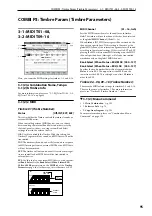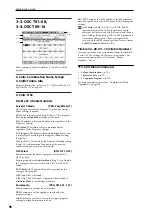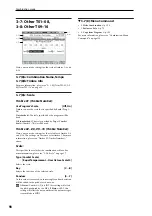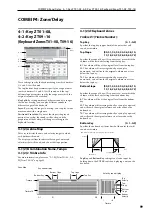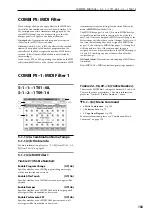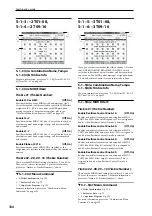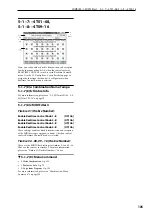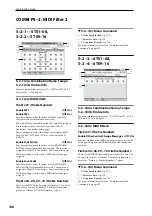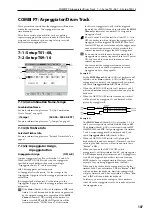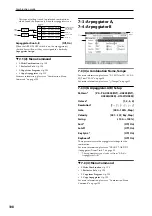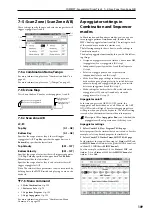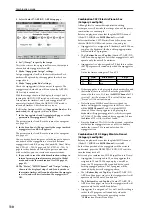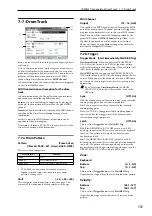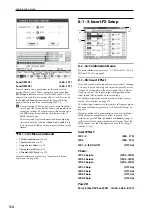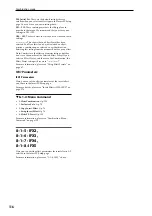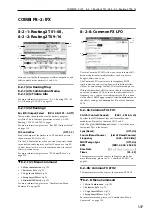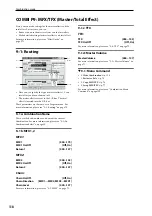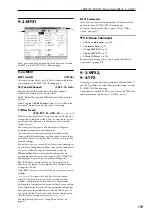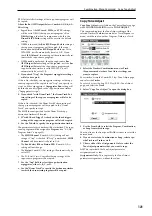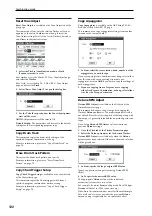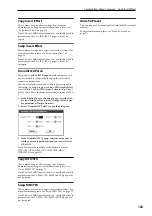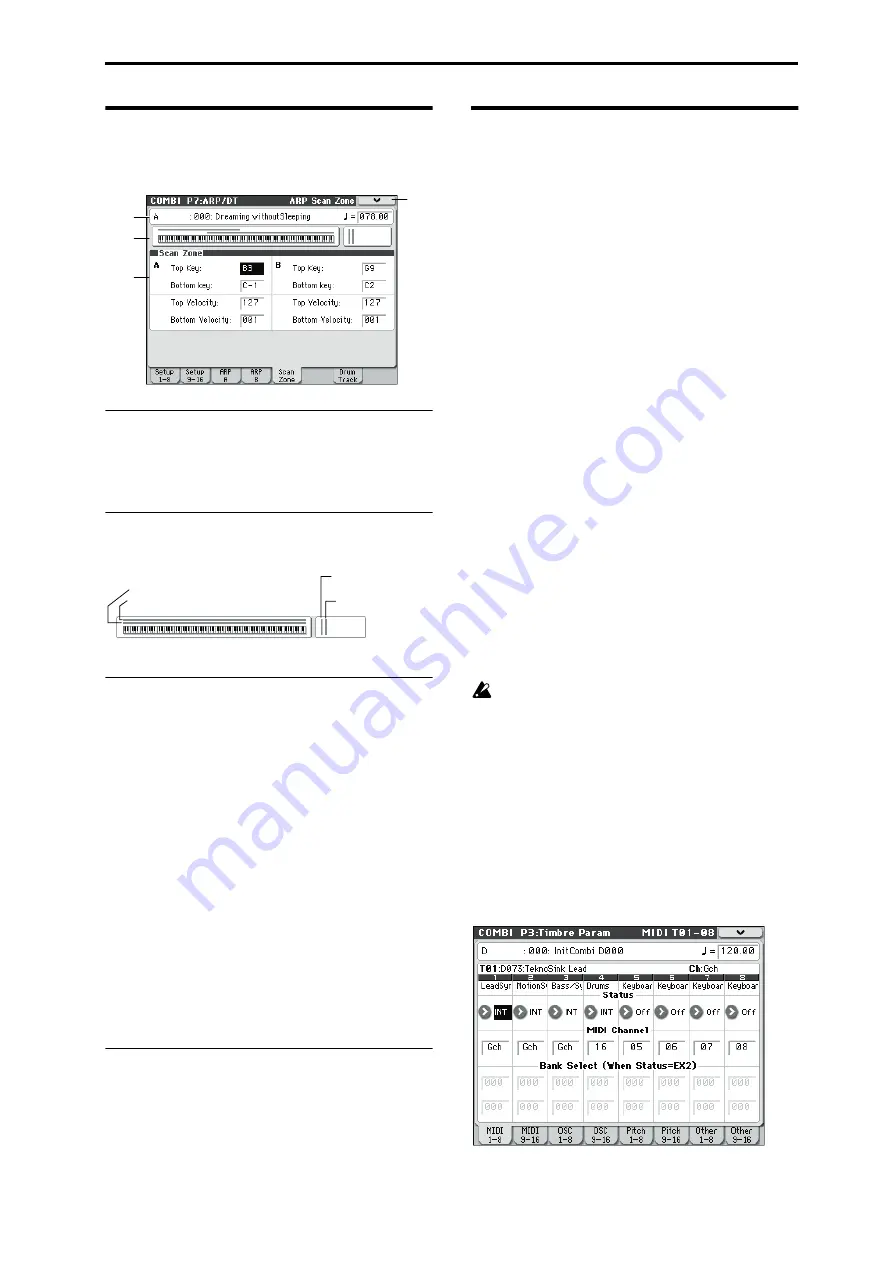
COMBI P7: Arpeggiator/Drum Track 7–5: Scan Zone (Scan Zone A/B)
109
7–5: Scan Zone (Scan Zone A/B)
These settings specify the note and velocity ranges that will
trigger arpeggiators A and B.
7–5a: Combination Name, Tempo
For more information, please see “Combination Select” on
page 80.
For more information, please see “
7–5b: Zone Map
This shows the Scan Zone for each arpeggiator, A and B.
7–5c: Scan Zone A/B
A:, B:
Top Key
[C–1...G9]
Bottom Key
[C–1...G9]
Specifies the range of notes (keys) that will trigger
arpeggiator A/B.
Top Key
specifies the upper limit, and
Bottom Key
specifies the lower limit.
Top Velocity
[001...127]
Bottom Velocity
[001...127]
Specifies the range of velocities that will trigger arpeggiator
A/B.
Top Velocity
specifies the upper limit, and
Bottom
Velocity
specifies the lower limit.
Specifies the range of notes (keys) and velocities that will
trigger arpeggiator A/B.
Note:
The values of these parameters can also be entered by
holding down the ENTER switch and playing a note on the
keyboard.
▼
7–5: Menu Command
• 0:
• 1:
• 2:
• 3:
For more information, please see “Combination: Menu
Command” on page 120.
Arpeggiator settings in
Combination and Sequencer
modes
In Combination and Sequencer modes, you can use use
two arpeggio patterns simultaneously, thanks to the
M50’s dual arpeggiator functionality. The settings in each
of these modes are made in a similar way.
The following example shows how to make settings in
Combination mode.
The dual arpeggiator functionality lets you do the follow-
ing things.
• Assign an arpeggiator for each timbre. Choose from
Off
,
(arpeggiator)
A
, or (arpeggiator)
B
.
☞
step 5
• Independently specify whether
A
and
B
will operate.
☞
step 6
• Select an arpeggio pattern and set parameters
independently for
A
and
B
.
☞
step 7
• Make Scan Zone page settings so that you can use
keyboard range or playing velocity to switch between
normal playing and arpeggiated playing, or to switch
between arpeggiators
A
and
B
.
☞
step 8
• Make settings for timbres that will be silent when the
arpeggiator is Off, and will sound only when the
arpeggiator is On.
☞
step 10
Arpeggiator on/off
Each time you press the ARP ON/OFF switch, the
arpeggiator will be switched on or off. When on, the ARP
ON/OFF switch will light. The selected arpeggio pattern
will begin when you play the keyboard. The on/off setting
is saved when the combination is written into memory.
If
Assign
is Off or
Arpeggiator Run
is not checked, the
arpeggiator will not operate even if this key is on.
Arpeggiator settings
1. Select Combi P0: Play– Program T01–08 page.
Select programs for the timbres that you wish to use. For this
example, select any desired program for timbres 1–4.
2. Select Combi P3: Timbre Param, MIDI T01–08 page.
For the timbres that you will be using, set
Status
to
INT
, and
set
MIDI Channel
to
Gch
or to the global MIDI channel (set
in Global P1: MIDI Basic
MIDI Channel
).
For this example, set timbres 1–4 to a
Status
of
INT
, and
timbres 5–8 to a
Status
of
Off
. Set the
MIDI Channel
of
timbres 1–4 to
Gch
.
7–5a
7–5
Menu
7–5b
7–5c
C–1
G9
Key zone of arpeggiator A
Velocity zone of
arpeggiator A
Velocity zone of
arpeggiator B
Key zone of arpeggiator B
Summary of Contents for M50-73
Page 1: ...2 E Parameter Guide ...
Page 86: ...Program mode 78 ...
Page 132: ...Combination mode 124 ...
Page 222: ...Sequencer mode 214 ...
Page 297: ...Effect Mixer Block Diagrams Main Outputs 289 ...
Page 418: ...Appendices 410 ...

